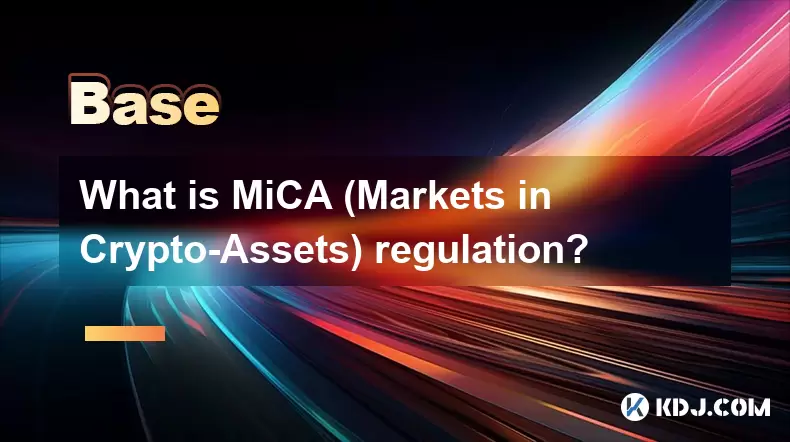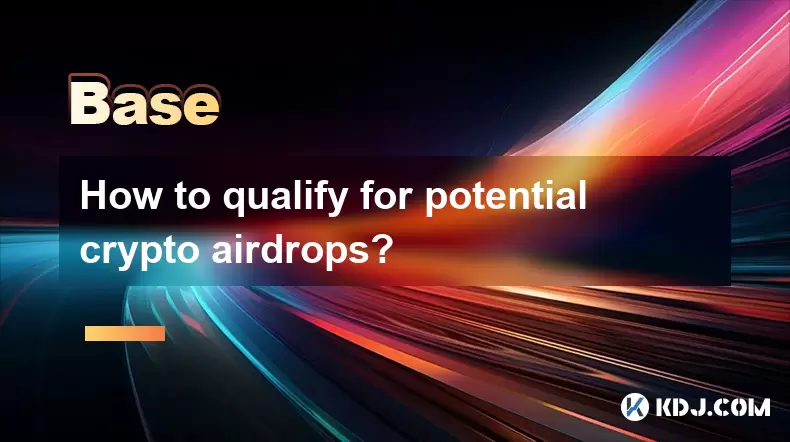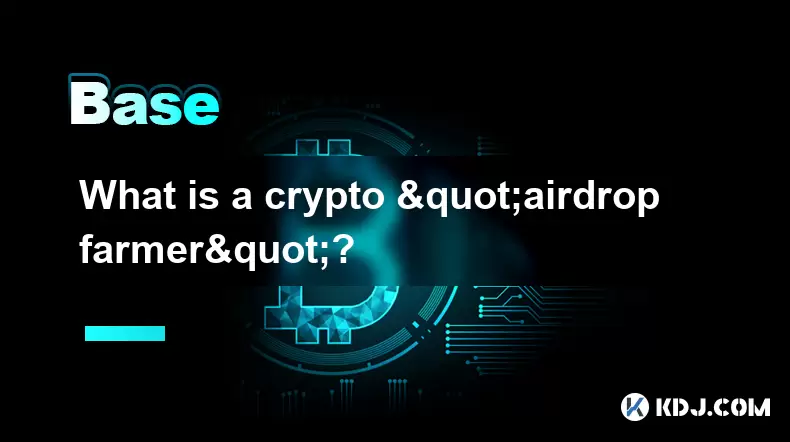-
 Bitcoin
Bitcoin $117900
0.31% -
 Ethereum
Ethereum $3766
0.28% -
 XRP
XRP $3.176
-0.31% -
 Tether USDt
Tether USDt $1.000
0.00% -
 BNB
BNB $795.6
1.51% -
 Solana
Solana $186.8
-1.09% -
 USDC
USDC $0.9999
-0.01% -
 Dogecoin
Dogecoin $0.2353
-1.33% -
 TRON
TRON $0.3226
1.49% -
 Cardano
Cardano $0.8172
-1.08% -
 Sui
Sui $4.178
3.06% -
 Hyperliquid
Hyperliquid $43.05
-3.39% -
 Stellar
Stellar $0.4367
-0.57% -
 Chainlink
Chainlink $18.62
1.47% -
 Hedera
Hedera $0.2828
6.63% -
 Bitcoin Cash
Bitcoin Cash $584.7
5.65% -
 Avalanche
Avalanche $24.81
2.53% -
 Litecoin
Litecoin $112.8
-0.88% -
 UNUS SED LEO
UNUS SED LEO $8.975
-0.08% -
 Shiba Inu
Shiba Inu $0.00001395
-1.07% -
 Toncoin
Toncoin $3.285
-1.05% -
 Ethena USDe
Ethena USDe $1.001
0.01% -
 Polkadot
Polkadot $4.123
0.76% -
 Uniswap
Uniswap $10.49
-0.18% -
 Monero
Monero $326.5
0.14% -
 Dai
Dai $0.9999
-0.02% -
 Bitget Token
Bitget Token $4.576
0.34% -
 Pepe
Pepe $0.00001247
-1.55% -
 Cronos
Cronos $0.1400
3.77% -
 Aave
Aave $295.1
-0.73%
What is MiCA (Markets in Crypto-Assets) regulation?
The EU's MiCA regulation sets a global benchmark by establishing clear rules for crypto issuers, service providers, and stablecoins to enhance transparency, protect investors, and ensure financial stability.
Jul 27, 2025 at 05:14 pm

Understanding MiCA: The EU's Landmark Crypto Regulation
The Markets in Crypto-Assets (MiCA) regulation is a comprehensive legal framework introduced by the European Union (EU) to regulate the rapidly growing cryptocurrency market. It aims to provide clarity, transparency, and security for investors, businesses, and regulators within the EU. MiCA represents one of the most significant regulatory efforts globally, setting a precedent for how digital assets are governed.
MiCA was designed to address the lack of uniformity in crypto regulation across EU member states. It introduces a unified rulebook that applies to all crypto-asset issuers, service providers, and trading platforms operating within the bloc. This framework is intended to foster innovation while ensuring consumer protection and financial stability.
Scope and Coverage of MiCA
The regulation applies to a wide range of crypto-assets, including utility tokens, asset-referenced tokens, and e-money tokens. Notably, it excludes traditional financial instruments that are already covered under existing EU financial regulations.
- Utility tokens are designed to provide digital access to a service or function within a specific platform or network.
- Asset-referenced tokens are pegged to one or more fiat currencies, commodities, or other crypto-assets.
- E-money tokens are a type of stablecoin that aims to maintain a stable value relative to a single fiat currency.
MiCA also introduces a new category called "significant crypto-asset trading platforms", which are subject to stricter oversight due to their potential systemic impact on financial markets.
Key Requirements for Crypto Issuers and Service Providers
Under MiCA, crypto-asset issuers must publish a white paper containing detailed information about the project, its objectives, rights attached to the tokens, and associated risks. This white paper must be made publicly available and approved by the relevant national regulator before the tokens can be offered to the public.
- Issuers must ensure the white paper is clear, accurate, and not misleading.
- They are required to disclose the technical and economic aspects of the token.
- Ongoing obligations include regular updates and post-issuance transparency requirements.
For crypto-asset service providers (CASPs), the regulation mandates licensing and operational requirements. These include:
- Compliance with anti-money laundering (AML) and counter-terrorism financing (CTF) laws.
- Implementation of robust cybersecurity measures.
- Maintenance of capital adequacy and risk management protocols.
Stablecoin Regulation Under MiCA
One of the most notable aspects of MiCA is its focus on stablecoins, particularly those with potential systemic implications. The regulation distinguishes between e-money tokens and asset-referenced tokens, with more stringent rules applied to the latter.
Asset-referenced tokens must meet the following conditions:
- Hold sufficient reserves to back the value of the tokens issued.
- Ensure that these reserves are segregated and protected from insolvency.
- Provide token holders with the right to redeem their tokens at any time.
For significant asset-referenced tokens, additional requirements apply:
- They must undergo an assessment by the European Banking Authority (EBA).
- Their governance structures and risk management systems must be thoroughly reviewed.
- They may be subject to direct supervision by the EBA.
These measures are designed to mitigate risks related to financial stability and consumer protection.
Compliance and Supervision Framework
The enforcement of MiCA will be overseen by national competent authorities, with the European Securities and Markets Authority (ESMA) playing a coordinating role. This supervisory framework ensures consistent application of the regulation across all EU member states.
- ESMA will be responsible for monitoring significant trading platforms and issuing technical standards.
- National regulators will handle day-to-day supervision and enforcement actions.
- There will be a centralized database for white papers and other required disclosures.
Crypto firms must appoint a legal representative established in the EU if they are based outside the bloc. This ensures that all market participants are subject to the same regulatory scrutiny, regardless of their jurisdiction.
Impact on the Global Crypto Industry
The introduction of MiCA has significant implications beyond the EU. It establishes a benchmark for crypto regulation and may influence policy-making in other jurisdictions. Many global crypto firms are adjusting their operations to comply with MiCA to maintain access to the EU market.
- Some companies are relocating their headquarters or establishing EU-based subsidiaries.
- Others are revising their token structures and white papers to align with MiCA requirements.
- Trading platforms are enhancing their compliance infrastructure to meet the new standards.
This regulatory clarity is expected to attract institutional investors who have been hesitant to enter the crypto space due to uncertainty.
Frequently Asked Questions
What is the effective date of MiCA?
MiCA was adopted in 2023 and will be implemented in phases. Most provisions will come into effect in late 2024, with some specific requirements, such as those for stablecoins, taking effect earlier.
Does MiCA apply only to EU-based crypto companies?
No, MiCA applies to any crypto firm offering services or issuing tokens to individuals or entities within the EU, regardless of where the firm is headquartered.
Are NFTs covered under MiCA?
MiCA includes provisions for non-fungible tokens (NFTs), but they are generally exempt from certain requirements unless they fall under specific categories such as utility tokens or asset-referenced tokens.
How does MiCA affect decentralized finance (DeFi)?
MiCA could impact DeFi platforms depending on their structure and whether they are deemed to be offering regulated services. Developers and operators may need to comply with disclosure and licensing requirements if their platforms are considered centralized or offer regulated functions.
Disclaimer:info@kdj.com
The information provided is not trading advice. kdj.com does not assume any responsibility for any investments made based on the information provided in this article. Cryptocurrencies are highly volatile and it is highly recommended that you invest with caution after thorough research!
If you believe that the content used on this website infringes your copyright, please contact us immediately (info@kdj.com) and we will delete it promptly.
- Crypto ETFs and Altcoins: Navigating the Wild West with Meme Coins and Tokenized Assets
- 2025-07-27 23:04:06
- Bitcoin Price, Portfolio Growth, and the Remittix Alternative: Navigating the Crypto Landscape
- 2025-07-27 23:04:06
- Cryptos to Watch in 2025: Punisher Coin, Chainlink, and the Altcoin Arena
- 2025-07-27 18:30:13
- Bitcoin, Altcoins, Rebound: Navigating the Crypto Comeback Trail
- 2025-07-27 18:30:13
- Ethereum, Bitcoin, and Altcoins: A Shift in Crypto Tides?
- 2025-07-27 19:10:13
- Windtree Therapeutics' Bold BNB Strategy: A $520 Million Crypto Play
- 2025-07-27 19:10:13
Related knowledge

What is the difference between CeFi and DeFi?
Jul 22,2025 at 12:28am
Understanding CeFi and DeFiIn the world of cryptocurrency, CeFi (Centralized Finance) and DeFi (Decentralized Finance) represent two distinct financia...

How to qualify for potential crypto airdrops?
Jul 23,2025 at 06:49am
Understanding What Crypto Airdrops AreCrypto airdrops refer to the distribution of free tokens or coins to a large number of wallet addresses, often u...

What is a crypto "airdrop farmer"?
Jul 24,2025 at 10:22pm
Understanding the Role of a Crypto 'Airdrop Farmer'A crypto 'airdrop farmer' refers to an individual who actively participates in cryptocurrency airdr...

What is the difference between a sidechain and a Layer 2?
Jul 20,2025 at 11:35pm
Understanding the Concept of SidechainsA sidechain is a separate blockchain that runs parallel to the main blockchain, typically the mainnet of a cryp...

What is the Inter-Blockchain Communication Protocol (IBC)?
Jul 19,2025 at 10:43am
Understanding the Inter-Blockchain Communication Protocol (IBC)The Inter-Blockchain Communication Protocol (IBC) is a cross-chain communication protoc...

How does sharding improve scalability?
Jul 20,2025 at 01:21am
Understanding Sharding in BlockchainSharding is a database partitioning technique that is increasingly being adopted in blockchain technology to enhan...

What is the difference between CeFi and DeFi?
Jul 22,2025 at 12:28am
Understanding CeFi and DeFiIn the world of cryptocurrency, CeFi (Centralized Finance) and DeFi (Decentralized Finance) represent two distinct financia...

How to qualify for potential crypto airdrops?
Jul 23,2025 at 06:49am
Understanding What Crypto Airdrops AreCrypto airdrops refer to the distribution of free tokens or coins to a large number of wallet addresses, often u...

What is a crypto "airdrop farmer"?
Jul 24,2025 at 10:22pm
Understanding the Role of a Crypto 'Airdrop Farmer'A crypto 'airdrop farmer' refers to an individual who actively participates in cryptocurrency airdr...

What is the difference between a sidechain and a Layer 2?
Jul 20,2025 at 11:35pm
Understanding the Concept of SidechainsA sidechain is a separate blockchain that runs parallel to the main blockchain, typically the mainnet of a cryp...

What is the Inter-Blockchain Communication Protocol (IBC)?
Jul 19,2025 at 10:43am
Understanding the Inter-Blockchain Communication Protocol (IBC)The Inter-Blockchain Communication Protocol (IBC) is a cross-chain communication protoc...

How does sharding improve scalability?
Jul 20,2025 at 01:21am
Understanding Sharding in BlockchainSharding is a database partitioning technique that is increasingly being adopted in blockchain technology to enhan...
See all articles

























































































